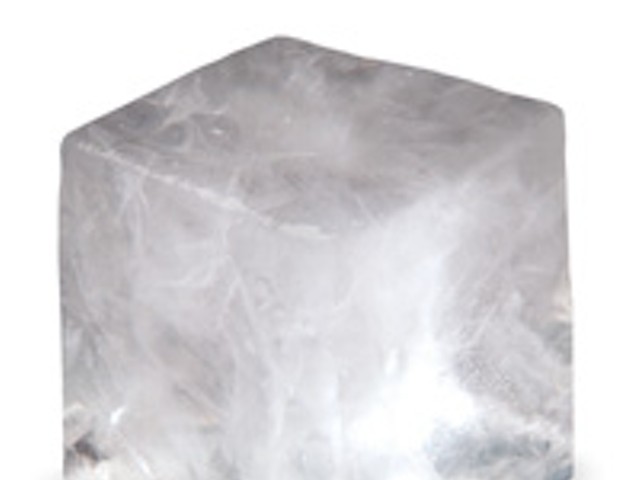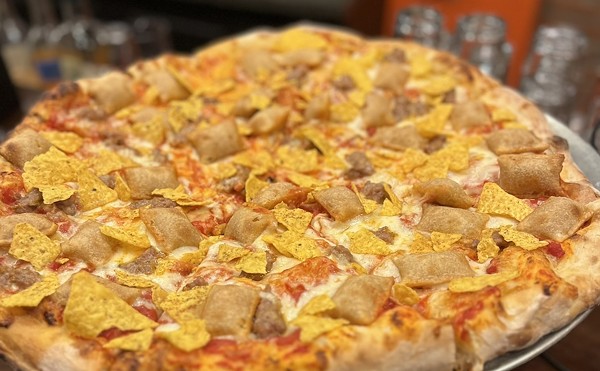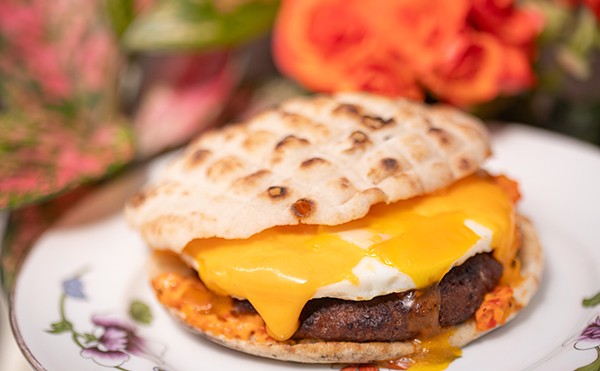As you peruse the cocktail menu at Taste, the restaurant and bar that opened earlier this month in the Central West End, you might be intrigued by the "Gold Coast Fizz," a concoction of whiskey, orange juice, cherry and walnut liqueurs, espresso syrup, egg white and soda. Or maybe the "Western Paradise" — bourbon, apple brandy, Drambuie, vermouth and "Cajun" bitters — is more your style.
Whichever of Ted Kilgore's creations you choose, by night's end you might very well find yourself talking about the ice that the bartender extraordinaire uses.
Chances are you don't think about the ice in your drink. You likely don't even have to make ice — your refrigerator does it for you. For those on the forefront of the mixology movement, however, ice is the next big thing.
Literally.
At Taste Kilgore pours some of his cocktails over a single piece of ice nearly as big as — and probably heavier than — a rocks glass. And this is no pedestrian cube. It's a perfect cylinder, identical in height and diameter (two-and-a-half inches). Put it this way: Drop one of these ice rods on your foot, and you'll be limping for a while. Size and heft aren't all this ice has going for it. It's also crystal clear.
"You can read through the ice," Kilgore marvels.
David Van Camp, whose Kirkwood-based ice-sculpting company Ice Visions produces the cylinders for Kilgore, agrees.
"You don't see any cloudiness at all," says Van Camp. "It just makes the drinks so much nicer."
The inspiration for the ice cylinders comes from Japan. There whiskey on the rocks is served with a single ball of ice, a solid sphere roughly the size of a baseball.
Van Camp says, "I've been to Japan, and I always look forward to getting a glass of whiskey. It's just kind of neat."
The ice balls are gorgeous. But the machines that create them are costly and inefficient. They make one ice ball at a time, and prices start at about $1,100.
At Ice Visions Van Camp can produce 90 ice cylinders in one go. A computer numerical control machine (or CNC) cuts long cylinders from large blocks of ice that have been formed from water filtered via reverse osmosis. A second machine cuts the cylinders into two-and-a-half-inch lengths. From start to finish, the ice block-to-cylinder process takes about half an hour.
Even before Kilgore brought the cylinders to Taste, he relied on top-quality ice to set his cocktails apart from the crowd. At the Maplewood restaurant Monarch, where he rose to prominence on the St. Louis bar scene, Kilgore was the first local mixologist to rely on an ice machine from Erie, Pennsylvania-based Kold-Draft.
"No one else makes a machine that produces a truly solid cube," says Chad Michael George, who worked with Kilgore at Monarch and, as bar manager at the new Demun Oyster Bar in Clayton, also uses Kold-Draft ice.
The aesthetic appeal of these solid cubes — the latest Kold-Draft machines have an air-filtration process that results in ice that is almost transparent — and Taste's cylinders is undeniable, but the attention paid to ice is mostly about function, not form.
"The biggest aspect Kold-Draft ice plays is getting the drink as cold as possible without overdiluting it," George explains. "Every cocktail recipe has some dilution figured in, but more common wafer ice overdilutes the cocktail."
The ice cylinder takes this to another level entirely. How much liquid does one cylinder lose a half-hour after Kilgore pours your drink over it? Assuming your drink came out of the shaker at roughly the same temperature as the ice, Kilgore says, "Maybe 5 percent."
Kilgore actually uses three different kinds of ice: the cylinders; small pellets for drinks like juleps; and Kold-Draft cubes, which are the workhorses for all cocktails that see the inside of a shaker.
Though nowhere approaching the stratospheric price of the Japanese sphere- making machinery, top-shelf ice comes at a cost. "That's the thing that amazes me," George says. "For people that lease the Kold-Draft machines, [the cost is] maybe 10 percent more per month."
That, at least, is quantifiable. As for the effect of boutique ice versus common cubes, you have one choice: Order a drink and taste for yourself.





